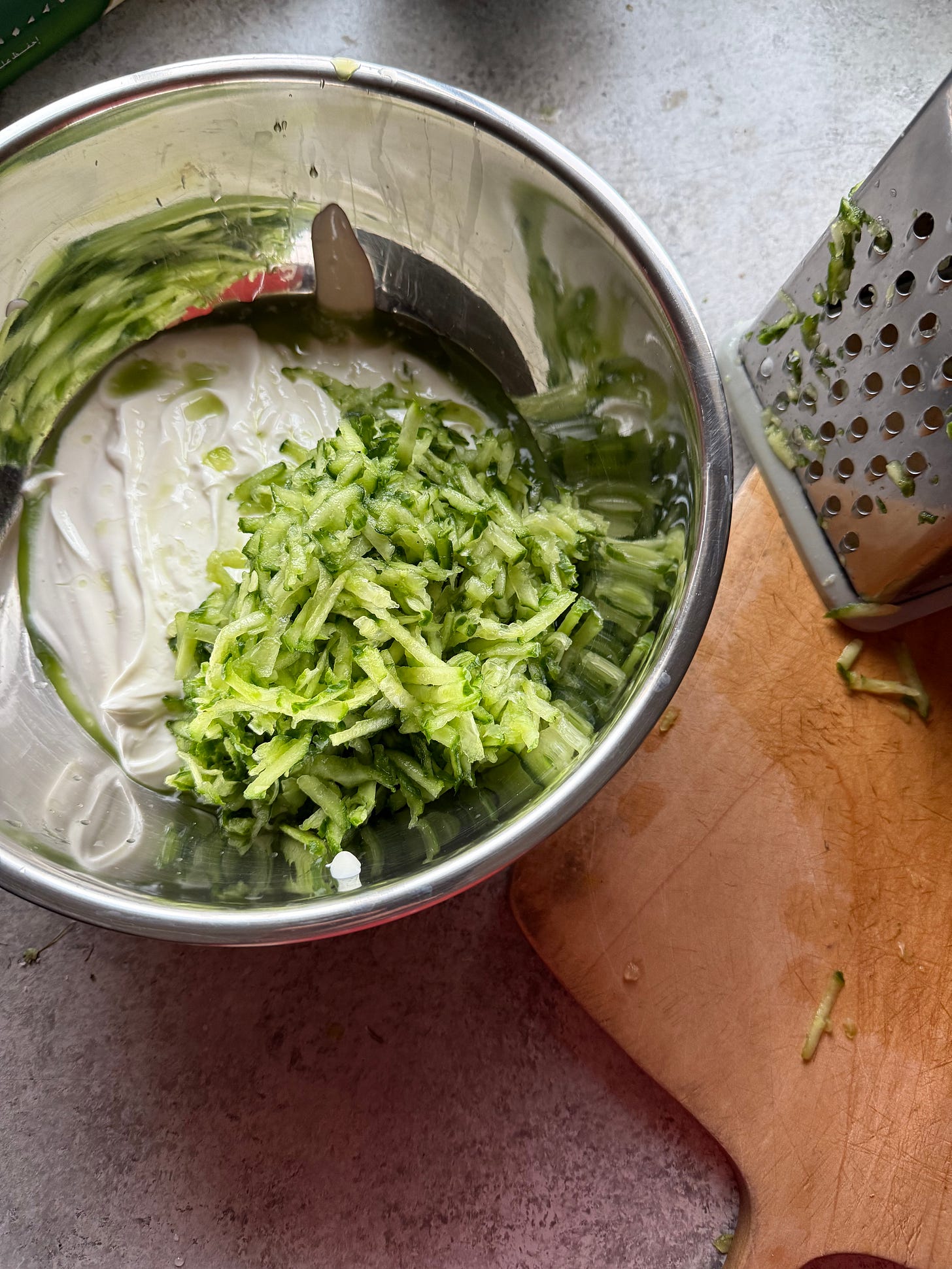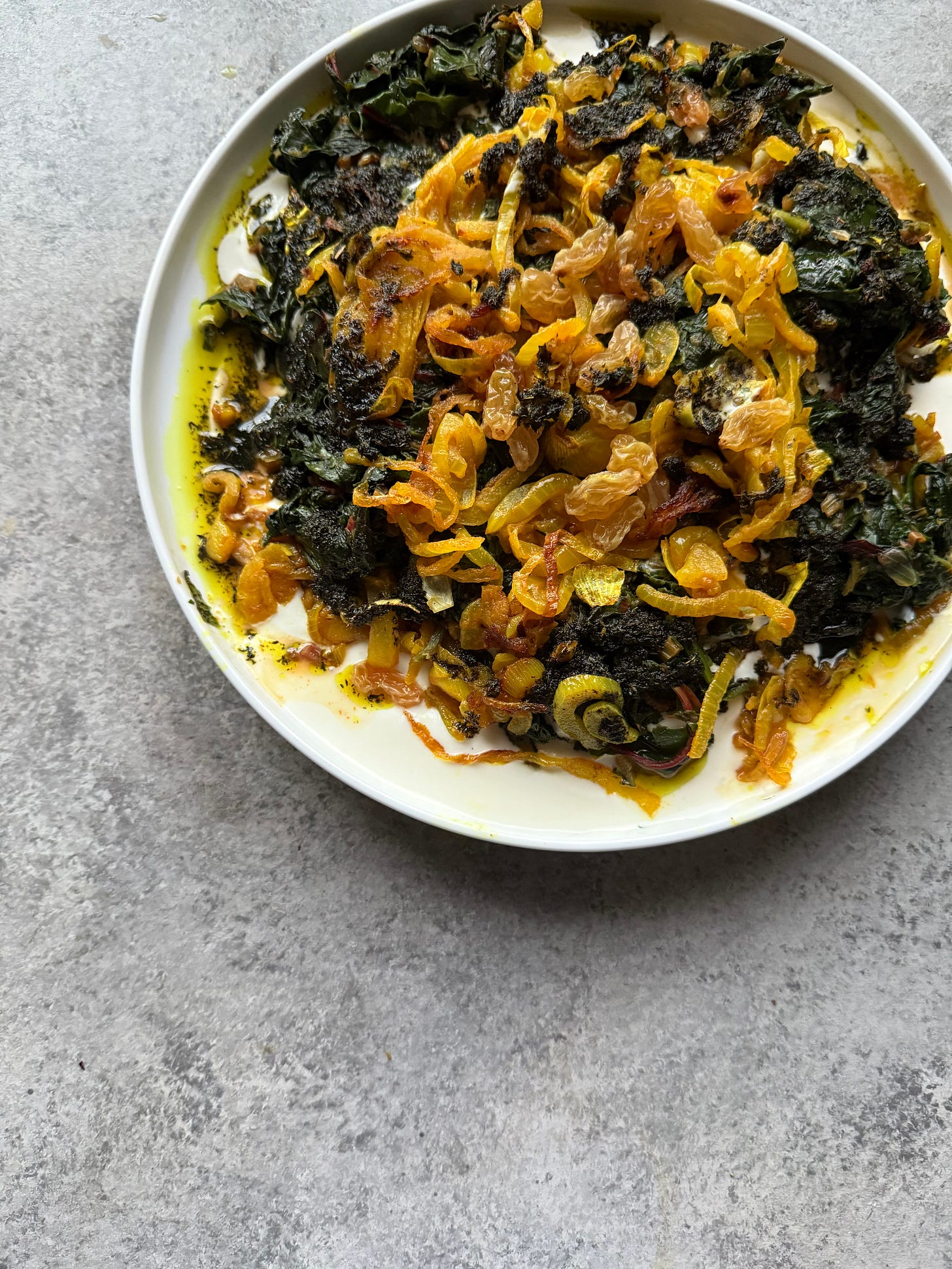The Quiet Power of Side Dishes: A Ramadan Reflection
Ramadan this year has been soul-enriching — calming, peaceful, and a true opportunity to find serenity within. I admit I finally had the courage to free myself from fickle, outdated relationships within my circle. It’s become clearer to me that I am capable of holding a firm grip on the choices in my life.
I devoted myself to cooking for my family and friends for iftar — a love language I’ve mastered over the years as a home cook living with my mom and younger brother.
While I mentioned in a previous post that I often focus on side dishes while everyone else is centered around the main event on the table, I’ve always believed that side dishes play a crucial role — not just at iftar, but at any meal. Think of your dining table as a performance: the main dish is the lead actor, and the side dishes are the supporting cast. And often, it’s the supporting ones that enhance the performance of the lead.
For instance, whenever my mom makes chicken biryani or any rice-based dish with protein, my first thought is always of cold yogurt. It’s soothing, refreshing, and comforting — the kind of balance that elevates every bite. For this, I usually prepare yogurt with cucumber and dill:
500g of labneh, two grated cucumbers (you can choose to squeeze out the liquid or not), 2–3 minced garlic cloves, a generous handful of finely chopped dill, salt, and pepper to taste.
I’ve been making this for years. It’s my most requested side dish whenever my friends and I gather for a BBQ in one of the abandoned desert spots. It also works wonderfully as a dip for chips and vegetables.
Another major hit this Ramadan was Fadi Kattan’s Houmous Mutabal Bil Tahinia from his cookbook Bethlehem. My mom raved about it so much that she insisted I make it again for a family iftar. I’ve now made it twice — once with dried chickpeas soaked overnight, and once with canned chickpeas, because I forgot to soak the dried ones ahead of time. Keeping canned chickpeas in the pantry always comes in handy for moments like this.
You might ask: is there a difference? Absolutely. Using dried chickpeas results in a velvety, flavorful hummus that almost dances on your tongue with every bite.
There are many other dishes from Fadi’s book that I know will become staples in our home — like his freekeh salad and baked aubergines.
Speaking of staple recipes, my brother-in-law, Salim, always asks for the tahini slaw from Amina Al-Saigh’s cookbook Souk to Table. I started making it before Ramadan, especially when dinner involved burgers or sandwiches. It’s delicious, incredibly easy to prepare, and fills a large salad bowl in no time — a crowd-pleaser, time-saver, and surprisingly generous.
Another favorite was Noor Murad’s kofta with feta and oregano. The book wasn’t published yet, but Noor kindly shared the recipe with me. I declared in advance that I’d be making a main dish the following day — and I loved how the whole method happens in the oven, from roasting the spiced vegetables to simmering the tomato sauce and finishing with the kofta.
The dish was pure comfort — tender kofta nestled in an iron skillet, served over turmeric-sautéed greens and labneh. A match made in heaven. I even scooped the leftovers onto toasted bread the next day for a snack.
And then, there are the quieter days — the ones where I don’t feel like standing too long at the stove. On those evenings, I chop 500g of carrots into chunks, toss them with 2 tablespoons of olive oil, 1 teaspoon of sea salt, and 20 grinds of fresh black pepper. Sometimes I’ll add a tablespoon of fennel seeds or cumin, then roast them in a preheated 200°C oven for about 30 minutes until they’re wilted and charred. The time depends on the carrots’ moisture, but the result is always deeply satisfying.
When I’m in the mood to fuss a little, I’ll spread cold yogurt onto a big plate and pile it high with roasted carrots—or whatever veg I’ve had in the oven. Even when it’s pared back, this dish has a way of bringing warmth to the table.









